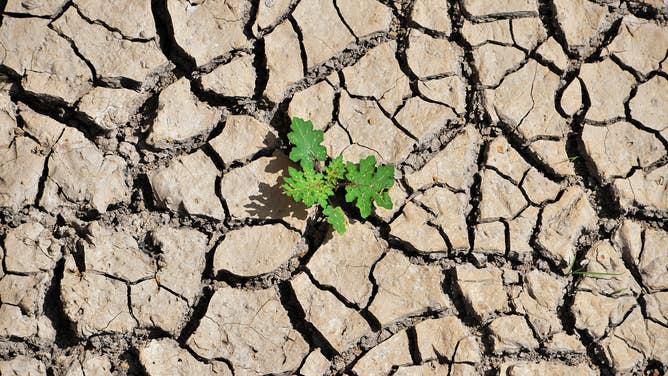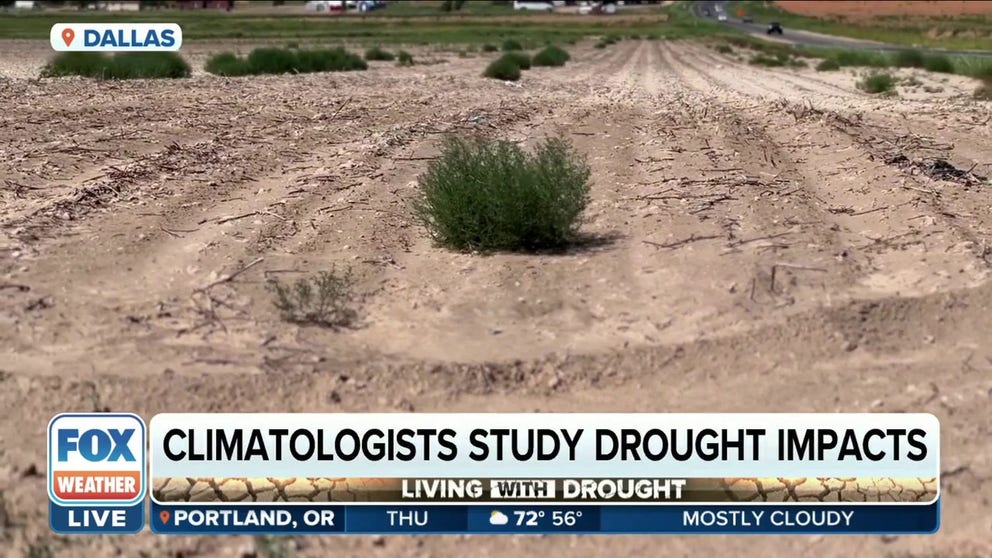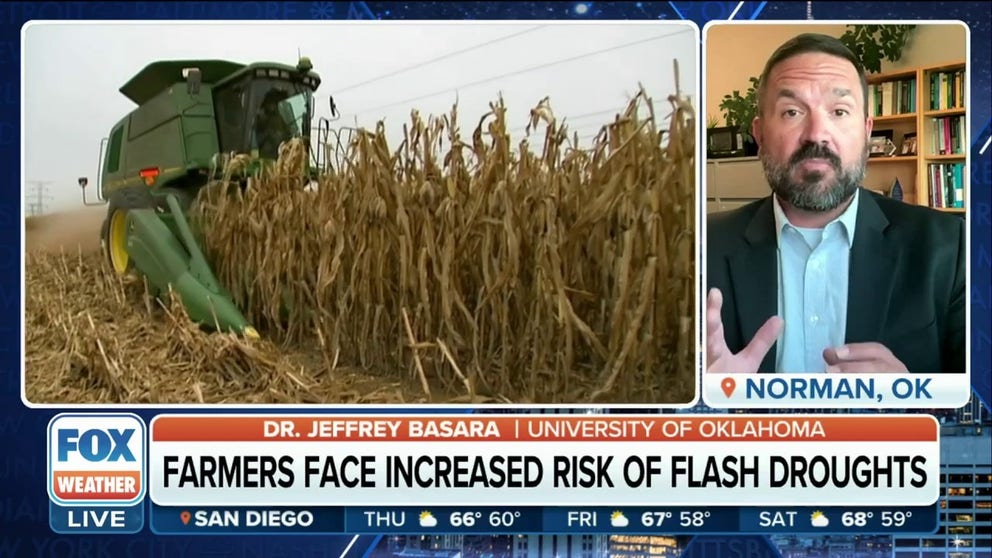What is a flash drought?
A flash drought is often preceded by abnormally high temperatures, high winds and changes in solar radiation. They typically occur during warm seasons in the central U.S.
National Drought Mitigation Center uses cutting edge technology to capture flash droughts
At the National Drought Mitigation Center on the campus of University of Nebraska researchers are creating new, cutting edge tools, many of them with satellite technology to capture flash droughts before they even appear. FOX Weather's Robert Ray reports.
Unlike a conventional drought which takes a while to develop, a flash drought, as the name suggests, happens much more quickly.
Flash drought is the rapid onset or intensification of drought. According to NOAA, a flash drought is often preceded by abnormally high temperatures, high winds and changes in solar radiation. They typically occur during warm seasons in the central U.S. Flash droughts can also be tied to rhythmic climatic patterns, such as La Niña events.
THE US DROUGHT MONITOR EXPLAINED

View of parched grounds at Los Laureles reservoir during Earth Day in Tegucigalpa, Honduras, on April 22, 2019. Los Laureles supplies more than 50% of the water to the 1 million-inhabitant Honduran capital city.
(ORLANDO SIERRA / AFP / Getty Images)
Changes in the rate of evapotranspiration – the process by which water is transferred from the land to the atmosphere by evaporation from the soil and by transpiration from plants – and soil moisture have been identified as key early-warning indicators.
"Higher temperature increases evapotranspiration … and further lowers soil moisture, which decreases rapidly as drought conditions continue," NOAA stated.
The prediction of flash drought is critical to successful mitigation and damage prevention.
If not predicted and discovered early enough, changes in soil moisture that accompany flash drought can cause extensive damage to agriculture, economies and ecosystem goods and services, according to NOAA.
7 WAYS TO CONSERVE WATER AT HOME DURING A DROUGHT
Farmers face increased risk of flash droughts
A recent study found that flash droughts will be more frequent in coming decades. Jeffery Basara, University of Oklahoma, told FOX Weather what that could mean to agriculture and ecological systems.
Recently, the lack of rain in May across the Great Lakes and Upper Midwest led to a flash drought. It was the fourth-driest May on record in Chicago with 0.71 inches behind only 1992 (0.30 inches), 1994 (0.58 inches) and 1934 (0.67 inches).
In a widespread flash drought across the central U.S. during the summer of 2012, NOAA reported damages in the central Great Plains were estimated to be more than $30 billion.

